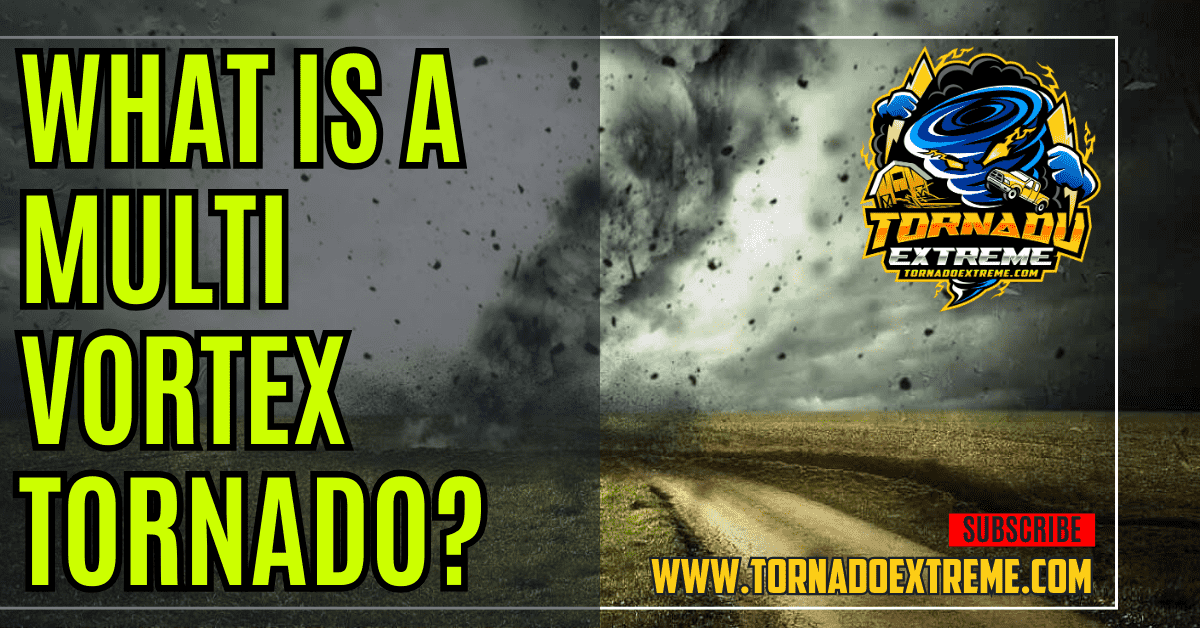Introduction – What Is a Multi Vortex Tornado?
Multi-vortex tornadoes are not like your regular, run-of-the-mill, single funneled kind. They’re a way for nature to tell us humans to back the hell up. Terrifying beauty is what we have here folks. With multiple vortices constantly moving and doing their own thing in a never ending cycle of pure power and destruction, it isn’t hard to see why these things are so terrifyingly unpredictable.
To look at these bad boys you would need to be a scientist or some sort of storm chaser who’s also probably insane. They still do learn from them though, which is good for us normal people who hate getting caught in them, as it may lead to improved predictions of weak damage within tornado paths. Much love and thanks go out to those brave enough to get near these things and study the main tornado structures up close!
Unraveling the Mystery of Multi Vortex Tornadoes
Good luck trying to predict where these bad boys will go next! The atmosphere they form under is so complicated that giving an accurate prediction seems nearly impossible. They can change direction on a dime, move faster than lightning itself and just when you think they’re done wreaking havoc… nope! That’s right folks, they can actually get stronger too.
Now, I’m no meteorologist but one thing I did learn about multi vortex tornadoes is that there aren’t enough words in the dictionary to describe them properly. Not even kidding, if someone were able to find enough words for me then maybe I’d consider going outside during one (probably not). You’ll be hard pressed finding anyone on this planet who doesn’t want more accurate predictions though. So it’s about time we start understanding how these things operate.
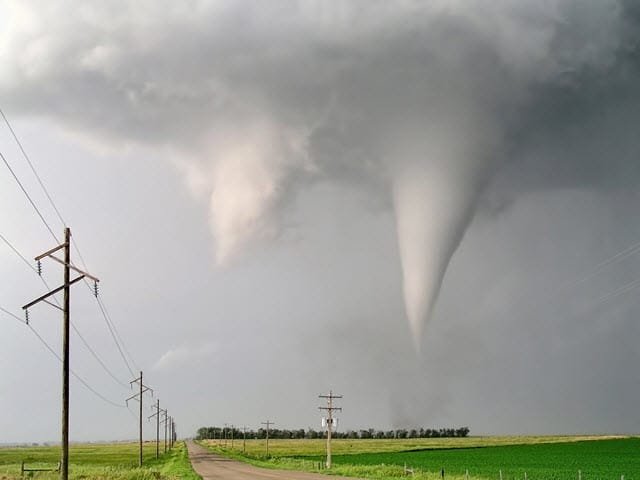
Definition and Characteristics
If you’re curious as to what makes multi-vortex tornadoes different from your run-of-the-mill cyclone then listen up because it’s quite fascinating, if not scary. It has two or more smaller rotating vortices along with the big one that you’re used to. The little ones can produce eye-watering wind speeds and cover a lot more land than the big one, like the big tornado near Altus OK, but each has unique characteristics related to tornado circulation. These little guys are basically free agents who can do whatever they want within the constraints of the overall structure.
The Formation Process
Don’t worry, I’m not going to try explaining how exactly these things form because I most definitely cannot. They need special atmospheric conditions and that’s all I know. What I do know is that it starts with what’s called a supercell thunderstorm which sounds absolutely terrifying by itself. Once this gets going, there’s a chance it begins to rotate more violently and tightly causing a tornado to form at its base. If pressure drops fast enough during this, multiple smaller vortices will start spinning around the main one.
I could have sworn we were trying to learn less about them but here we go trying to figure out why they do what they do and how they do it! Let’s just hope none of these researchers accidentally create some sort of monstrosity after the fact.
Distinct Features of Multi-Vortex Tornadoes
Now that we’ve covered everything else, let’s talk about their actual features, including the impact of ground-relative wind in a tornado. If there are two or more vortices then in theory you should be able to see them spiraling around each other inside the bigger vortex. Now stand back and watch as every car in sight gets thrown through your window because that thing is powerful.
As for direction, intensity, etc., well… forget about it! It has so many different things moving at once so quickly in such a chaotic fashion that keeping up with this thing would make your head spin faster than your average exorcism movie victim!
Forecasters at the National Weather Service have long been fascinated with certain tornadoes that defy conventional wisdom. When narrow swaths of extreme damage lie next to weak damage along a tornado path, it’s clear that you’re looking at one big mystery. In this case, the areas of extreme destruction are not just from a big tornado near Altus, Okla. — they were often caused by the presence of subvortices within the parent tornado, which can add over 100 mph to the ground-relative wind speeds, creating a wedge. This type of multi-vortex tornado is a tornado within a tornado; several smaller tornadoes spin around the larger vortex.
The extraordinary power of multi-vortex tornadoes comes from their high wind speeds, but those winds are confined to small areas, showcasing the unique circulation patterns within the main tornado. So don’t be surprised if two houses sit side by side and one is blown away while the other has only minor damage. Smaller subvortices rotate faster than bigger ones, so intense wind speeds are concentrated over smaller areas — and cause severe damage there.
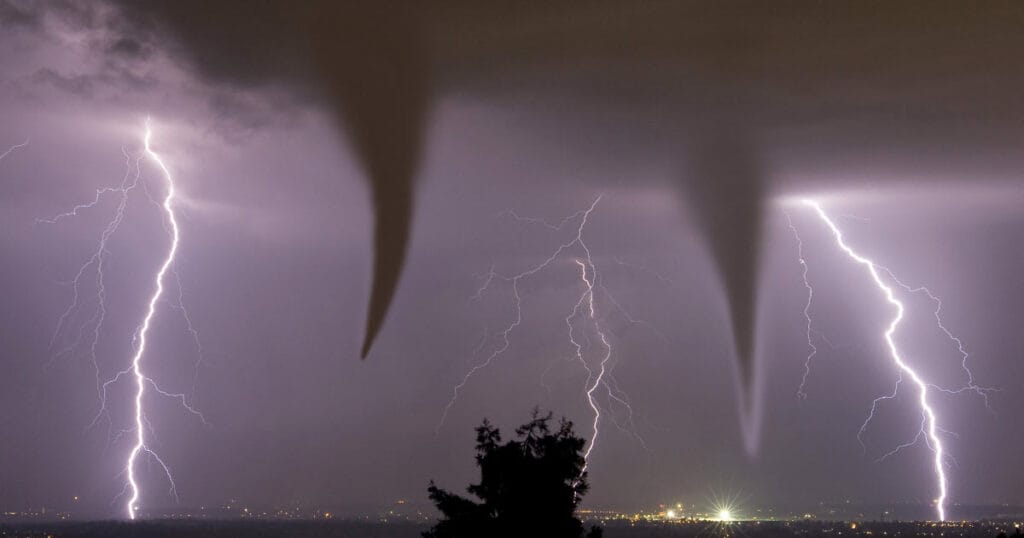
The Science Behind Their Power
For years, forecasters of the National Weather Service have been fascinated by a subset of tornadoes that seem to defy logic. It’s already strange enough that you can find narrow arcs of extreme destruction right next to weak damage within tornado paths. But they weren’t satisfied with knowing that; they wanted to know why.
Surely, they thought, the narrow arc of extreme destruction is just a result of an extra big tornado near Altus, OK? No, it turns out. At least sometimes not. Those arcs are often created by subvortices existing within the parent tornado.
These subvortices add over 100 mph to the ground-relative wind speeds — creating a wedge tornado. This type of multi-vortex tornado works as a smaller storm spinning around inside the larger one. In doing this intricate dance with debris and wind, it does create those narrow stretches of intense destruction and mayhem — albeit in a way that seems impossible at first glance.
The incredible power these types of storms pack comes from how fast and tight their sub-vortices spin. These small storms rotate at extremely high velocities — causing them to pour all that energy into very tight spaces while leaving others mostly untouched.. The interaction between multiple vortices amplifies overall wind speed in some parts and allows for lesser winds in other spots too – resulting in what looks like impossible damage patterns.
See Also: What is a Waterspout Tornado?
Wind Speed and Damage Potential
Multi-vortex tornadoes typically rank among nature’s most powerful phenomena. They concentrate energy into minuscule areas, producing some of the highest wind speeds ever recorded on Earth’s surface, typical of the wind in a tornado circulation.
Tornado scientists use the Enhanced Fujita Scale (EF-Scale) as a measure of twister intensity based on observed damage patterns after each event. The scale was developed by an engineering committee led by Tetsuya “Ted” Fujita back in 1971 (hence EF).
Some rough comparisons can also be made between SMTs and single-vortex monsters using traditional scales like F- or EF-scale ratings derived from observed damage. A violent EF4 or EF5 SMT will, on average, cause more damage over a broader area than a similar rating assigned to an SMT (see graphic below). But don’t be fooled: Single-vortex tornadoes are often more destructive than multi-vortex ones of the same rating. That’s because of the whirl, wind patterns, and the distinct tornado circulation inside the V.
The unpredictable actions of subvortices as they move around within an overall seething vortex can lead to both widely separated narrow swaths of intense destruction and long swaths of weaker damage. The paths taken by individual subvortices within parent vortices, combined with their parents’ overall progress across the ground, makes it hard to assess risk or issue timely warnings.
Comparison with Single-Vortex Tornadoes
All tornadoes are dangerous and capable of causing significant damage, but there are some key differences between single- and multi-vortex tornadoes. While single-vortex tornadoes have one rotating column of air, multi-vortex tornadoes contain multiple rotating vortices within the main funnel. Because of these additional spinning winds in different directions, multi-vortex tornadoes can produce higher wind speeds and create a larger path of destruction than their single-vortex counterparts.
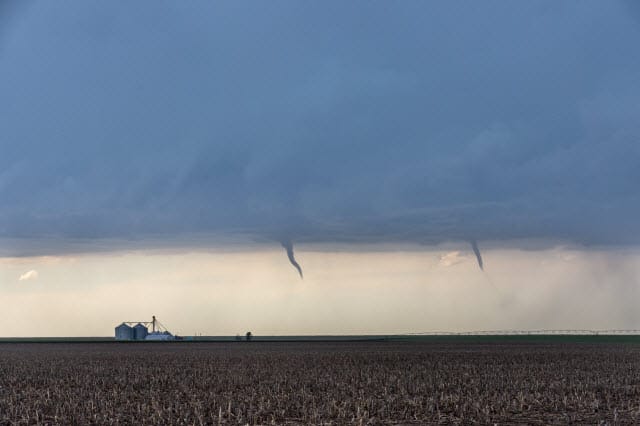
Historical Accounts of Devastation
Though there have been many terrible tornadoes throughout history, very few can compare to the devastation that multi-vortex tornadoes cause. The impact they leave on communities is nearly irreversible and can take years for regions to rebuild and recover from. By analyzing these events, researchers are able to predict future storms and lessen their impact through preparation.
Noteworthy Multi-Vortex Tornado Events
Two of the most historically significant multi-vortex tornadoes include the 2011 Joplin Tornado, as well as the 1999 Oklahoma Tornado Outbreak. Both caused immense destruction on a widespread scale and unfortunately resulted in loss of lives in massive numbers. However, it is because of this destruction that valuable insights were discovered about how these storms are formed.
Analyzing these historical events is key in developing strategies for predicting the occurrence of future multi-vortex tornadoes. This knowledge allows meteorologists to develop better warnings systems so as many people as possible can be alerted beforehand. The more we learn from past events like this, including early 20th century tornado tales, the more likely we are to prevent such catastrophes in the future.
The 2011 Joplin Tornado
Causing over $2 billion dollars in damages alone, it’s not hard to see why many consider this one of America’s deadliest tornadoes. Hitting Missouri with virtually no warning at all, homes were ripped off their foundations, and over 150 people lost their lives that day, showcasing the unpredictable nature of tornado circulation. Because its structure was so complex it made tracking the storm even harder than usual.
Since then however, Joplin has been rebuilding little by little but there still seems to be a long way to go. In order for other towns like it across America though a huge improvement had to happen within our weather warning systems and general preparedness as a community.
The 1999 Oklahoma Tornado Outbreak
Featuring several confirmed twisters including an F5 monster that leveled parts of Oklahoma City and its suburbs, this outbreak will go down as one of the worst. The swarm destroyed countless homes and claimed many lives throughout the process. It taught us that multi-vortex tornadoes are capable of coming out of nowhere and causing severe damage when least expected.
Although it’s awful that these things happen, they often allow for positive change to occur within our society as we learn what exactly went wrong. In this case, new radar technology was developed in order to better predict future storms and save more lives in return.
The Impact on Communities
A specific type of tornado is called multi-vortex. It’s a kind of cyclone made up of several vortices attached to a main vortex. They’re usually seen in groups of two to five, but there have been instances where there’s been over 100. Scientists who study tornadoes now believe that many contain several vortices, not always as clear to see as this big twister has shown. These subvortices swirl around each other like a tangled pile of spaghetti, adding even more destructive power to these storms.
When people see one forming for the first time, they’re advised to get inside and take cover as soon as possible. But being prepared before it even touches down can save lives and property too.
Multi-vortex tornadoes; These violent windstorms aren’t just bad because they destroy everything in their path; they also cause emotional and economic turmoil that can take years or decades to recover from. These unexpected events can overwhelm local resources due to their suddenness and severity. While authorities try their hardest to help communities make a comeback after the storm passes, it can be difficult if not impossible.
However, facing something like this together builds community resilience that would be hard come by otherwise — similar to how people bond through overcoming adversity — which could prove helpful for future catastrophes.
Recovery and Reconstruction Efforts
It’s important that these lessons stick with communities so that history doesn’t repeat itself when another multi-vortex tornado barrels through town. People will need all hands on deck — local, state and federal agencies along with volunteers from non-profit organizations — if recovery is expected in a timely manner at all.
Clearing debris will be one of the first tasks. Then, it’s time to rebuild infrastructure and aid those who were affected. The goal is to get people back on their feet as soon as possible so they can go back to something resembling normal life.
In the meantime, authorities should look into changing building codes and construction practices so that less damage is done if a tornado strikes again in the future. Emergency preparedness and response plans could benefit from some fine-tuning too, including implementing regular drills for natural disasters like this.
Advances in Tornado Prediction and Safety
Tornados are tricky things to pin down. But the scientific community has made huge strides in understanding how they form and when they’re likely to touch down thanks to improved technology.
With state-of-the-art computer modeling along with satellites being able to watch these storms from space, it’s no wonder why we’re getting better at forecasting them before they strike. Doppler radar is also an excellent tool when it comes to predicting which way a tornado will move due its ability to measure velocity of objects moving toward or away from the radar unit.
And now that scientists know more about them, all of this information can be passed along through educational programs and emergency alert systems — raising awareness throughout affected communities so individuals are better prepared next time around. In fact, these advances have saved lives already.
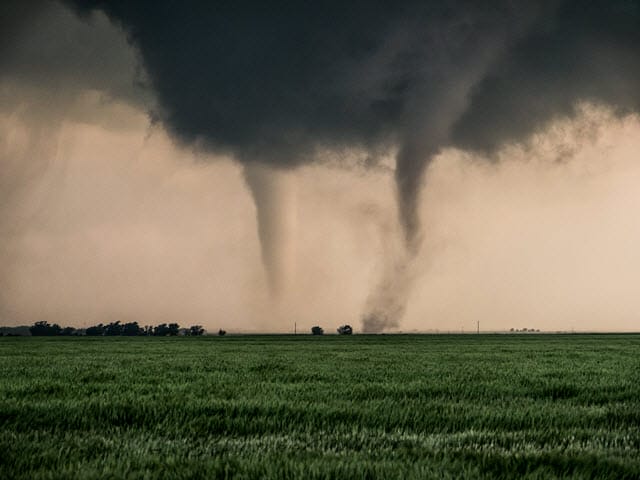
The Role of Technology in Understanding Tornadoes
Technology has changed the game. It’s made it easier for people to understand and respond to tornadoes. From early detection systems to tracking their paths, these scientific advancements offer a glimpse into the power of these natural disasters. They also show us how we can prepare better.
Doppler Radar and Tornado Detection
Doppler radar stands at the forefront of tornado detection. The ability it has to measure wind speed and direction drastically improves the accuracy of a forecast — that’s why this radar system is often referred to as the best in its field. It allows meteorologists to see inside storms, providing detailed information about each one’s structure and potential severity (i.e., how bad it could be). Early detection is crucial for timely warnings to those in harm’s way.
Fast-forwarding a bit, Doppler radar technology continues evolving faster than most people can keep up with. Eventually, though, scientists will have learned enough about how tornadoes form just by using Doppler radar alone. By analyzing shifts in wind patterns — including the ground-relative wind found in a tornado — they can better predict which storms might produce them (tornadoes), including multiple vortex ones [the most feared]. Getting more accurate info from this kind of technology will be key when trying to provide earlier warnings.
Improvements in Early Warning Systems
Early warning systems get better over time, obviously. With advanced notice comes earlier reactions and a higher chance of survival; but there are other things like sirens that need activation too — sirens that warn an incoming tornado’s arrival before you even know about it! Newer systems have made those things possible by making sure more people have time to seek shelter by broadcasting alerts on multiple platforms as soon as humanly possible… well, as soon as meteorologically possible.
A big reason why these new approaches even work is because heavy reliance on Doppler radar technology enables us to get warnings out as soon as possible. The faster the process, the more time you’ll have to prepare. And in the case of weather alerts, seconds could be the difference between life and death.
The Future of Tornado Research
Buckle up for this one, because it’s a doozy. If you thought Doppler radar and all that other stuff was cool… just wait! Scientists are working on developing models that can predict tornadoes with greater accuracy and farther in advance — using artificial intelligence (AI) to analyze vast amounts of weather data to identify patterns leading to tornado formation is only the beginning.
Once they’ve reached those goals, scientists want to start using drones to study tornadoes closer than ever before. They’d be able to send them right into areas that are too dangerous for humans [obviously] and collect all sorts of different data points. That kind of info could revolutionize all future prediction and preparedness strategies.
See Also: Green Sky Tornado: Why Does the Sky Turn Green?
Satellite Imagery and Tornado Tracking
Breathe in for this sentence, and imagine the ground-relative wind in a tornado as it twists and turns. Exhale for this one… Satellite imagery has become an absolute game changer when it comes to tracking these storms. By providing real-time images of weather systems, meteorologists have been able to monitor storm development and movement across large areas — which is essential when trying to predict if a storm will produce a tornado or not.
Not only does satellite imagery help detect them early on, but it also helps assess the aftermath by comparing before-and-after shots. When people see how much damage one causes from space while looking down at Earth’s surface, they’ll be able to better plan their recovery process moving forward.
Enhancements in Accuracy and Reliability
Over time, technology gets better thanks to new innovations being created daily in labs across the globe. In terms of satelitte technology specifically: improved resolution paired with faster data processing allows scientists/ meteorologists/ whoever else many benefits like clearer and more detailed views of storm systems. This leads to better predictions and a deeper understanding of tornado behavior.
Furthermore, if you merge satellite data with other meteorological tools like Doppler radar, you’ll end up with a more comprehensive weather monitoring system. This will provide more accurate information on tornado warnings to communities, so that they can prepare and respond.
Climate Science Contributions
In addition, satellite imagery and tornado tracking have made important contributions to climate science. By studying long-term data on tornado occurrences and paths, scientists are able to identify patterns while also seeing how those patterns might be shifting due to climate change. This research is crucial for understanding the impact global warming has on how many tornadoes there are and how strong they become.
The data also helps in modeling future scenarios related to climate. Doing this better equips us with strategies meant for mitigation and adaptation. The knowledge obtained from studying tornadoes within the context of climate science is priceless in order for us to be ready for whatever challenge may come next regarding weather patterns or natural disasters.
Safety Measures and Preparedness
Safety precautions and preparedness are the backbone of protection. They help reduce damage to lives and property. Keeping track and understanding the technology behind tornado detection helps communities prepare with strategies that keep everyone safe and sound. Constructing safe shelters, plans for emergencies, and being in the loop through reliable warnings all play a role in staying secure.
Building a Safe Shelter
When it comes to preparing for a tornado, constructing a shelter is crucial. A properly made hiding spot can significantly reduce injury or death caused by multi vortex tornadoes.
Guidelines for Home and Community Shelters
There are specific guidelines for constructing home/community shelters that ensure their effectiveness. Using strong materials, fastening it to a solid foundation, and putting them somewhere easily accessible to residents—especially those in regions prone to multi vortex tornadoes—are crucial points that make sure everyone stays safe despite the devastating power of these events.
The Importance of Location and Construction
Where you put your shelter and how you build it plays an important role in its effectiveness. Staying away from windows and exterior walls is key when trying not to get hit by debris flying at high speeds. Building regulations have standards specifically designed to be able to handle such high winds and pressure changes brought on by these natural disasters.
Emergency Planning and Drills
Developing emergency plans with drills regularly held helps make sure no one forgets what step they need to take next when hearing turtle thunderstorms approaching (tornado warning). By having practice they’ll be able to act on instinct instead of stopping to think about their next move.
The Role of Community Awareness
Creating awareness around natural disaster threats helps ensure that people don’t brush it off as something unlikely to happen – because it will happen eventually if nature has anything else in mind—let’s hope only once in our lifetime though! Informative programs on TV or brochures can let people know how vital having an emergency plan is while also explaining why they should attend one of the regular drills. When people all work together, creating a community resilient to natural disasters becomes possible – and it could save many lives.
Community leaders play a significant role in promoting awareness and encouraging participation in preparedness activities. By working together, communities can create a culture of preparedness that enhances the safety and well-being of all residents.
Key Elements of an Effective Emergency Plan
A solid emergency plan has safe shelter spots identified, communication strategies planned out, and essential items stocked at all times. While these are general things that everyone’s plans should have, customizing it to better fit the specific needs for individuals/families with mobility issues or pets is also important, especially considering the weak damage within tornado paths. Since human memory tends to fade over time when things aren’t practiced regularly, updating and practicing the emergency plan is key in keeping everyone ready for an emergency.
Additionally, knowing what your local warning systems sound like and how they alert you about weather conditions—specifically multi vortex tornadoes—is crucial knowledge required to act fast enough during emergencies. This knowledge will be the line between you being safe today or being hurt tomorrow. If everything mentioned above is given proper attention by individuals as well as communities as a whole—safety should no longer be such an unreachable goal.
Dispelling Myths and Misconceptions
Safety precautions are easy for people to shove aside if they don’t think they’re worth preparing for—this is what we want to change through providing accurate information! Dispelling false myths could genuinely save lives within a community where people are miss-informed. One common myth that needs clarification, especially regarding multi vortex tornadoes: Just because you’re within a tornado safe zone doesn’t mean you’ll only experience weak damage – Harmful winds will still find their way inside regardless of anyone’s expectations or beliefs!
A lot of people believe that tornadoes only strike in Tornado Alley. But that’s just not the case! If you’ve got the right conditions, a tornado can come almost anywhere on Earth. Another one is that opening your windows will help during a tornado. That’s also not true! It’s best to seek shelter instead of wasting time trying to equalize pressure. There’s also this idea going around that tornadoes can’t cross hills or rivers. Again, so wrong! They can cross over any type of natural barrier.
But what about hiding under an overpass? That’s gotta be safe, right? Nope! Actually it’s super dangerous — especially when it comes to multiple vortex tornadoes. Overpasses sometimes funnel wind speed up instead of reducing it, making them one of the worst places you could be during a twister. Also, just because you don’t see a swirling mess doesn’t mean there isn’t one coming at you… Many are hidden by rain or low-hanging clouds. So listen for warnings instead of waiting for visual confirmation.
The Truth About Tornado Safety
When threatened by a twister, find shelter immediately in a basement or an interior room on the lowest floor of a sturdy building — away from windows. No matter how much you decorate it, mobile homes offer little protection against violent winds and should be evacuated if possible (if there is enough advance warning). If you’re outside with no accessible buildings nearby, lie flat in a low-lying area as small and open as possible while protecting your head and neck with your arms.
You should always have an emergency kit prepared and know where to go when danger strikes — before any alerts sound. This includes stocking up on water, food and necessary medications and having important documents handy in case they’re needed later on down the line.. Contrary to popular belief: Planning goes way further than myth does to protect you from dangerous storms.
Clarifying Misunderstandings About Prediction and Tracking
You might think that tornadoes are completely unpredictable, but there’s a lot of forecasting going on behind the scenes. While scientists can’t yet accurately predict when and where one will touch down, they can tell you what conditions need to be met in order for one to form. This is why they issue tornado watches and warnings, so that people have ample time to get to safety. Doppler radar has also come a long way in helping meteorologists find these swirling beasts before it’s too late — even ones buried in heavy rain.
It’s another misunderstanding to assume that tornadoes only move northeast. They actually go in every direction! A twister’s path is influenced by its parent storm’s direction and speed, so anyone looking at outdated resources might be caught off guard if their area gets hit with one. By understanding the truth about how tornadoes are predicted and tracked, communities can better respond to these dangerous natural events when they do strike.
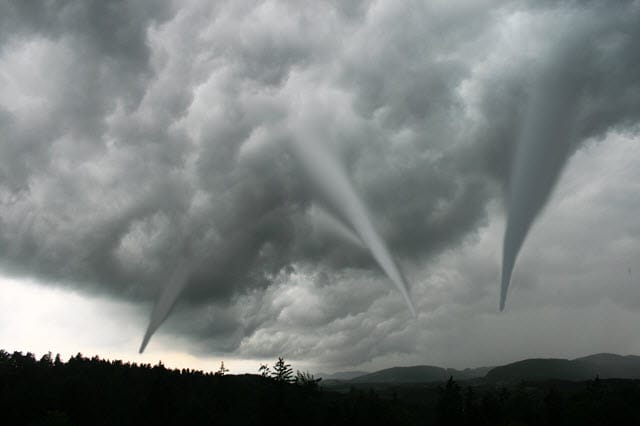
A Sneak Peek of What’s to Come
The earlier we can detect a tornado, and the better prepared the communities could be. As time goes on, they will too with more advanced modeling and simulations. Early warning systems will get an upgrade to give people even more of a heads up when it comes time to take cover. If in case they don’t have anywhere to go, or if they’re out of range for a safe spot, increased public awareness and education on safety will help minimize the impact of mother nature’s wrath.
Advances in Tornado Modeling and Simulation
We’ve come pretty far when it comes to studying these killer storms. Scientists now use advanced computer models to get insight into how these big guys form and behave. It goes as far as understanding what conditions are needed to create multiple-vortexes tornadoes with their suction vortices. By simulating different scenarios researchers can see where things go wrong, aiding in predicting when and where one might pop up next.
It’s all about giving people more time so that they can take cover before its too late. This is done with better models that allow us to design buildings and structures strong enough to withstand tornadoes like it’s nothing at all.
It doesn’t matter how much we evolve though, these monsters will always be unpredictable. But we’re getting closer every day by finding new ways to analyze data quickly while identifying patterns that might precede a formation… With the help of machines! So let’s hope that within our lifetime we’ll have access to accurate predictions!
Predicting the Unpredictable: The Next Frontier
The challenge of predicting tornadoes is still a difficult one to overcome. But we’re certainly getting closer. Computers have been able to run simulations and analyze data that would’ve taken decades in years prior, dramatically improving our understanding of circulation within tornadoes. This in turn offers a more fleshed out understanding on the subject and allows scientists to work toward making predictions with better precision. It’s said that by doing this, we can predict multiple-vortex tornadoes and the suction vortices they create in real-time. Which are key to assessing how dangerous it could be and where it might strike.
Artificial intelligence (AI) and machine learning are fairly new technologies but they’re being welcomed into scientific communities all over. They allow for quick analysis of large amounts of data, which will help spot patterns that might precede the creation of a tornado. Making breakthroughs like these could ultimately save lives and reduce property damage by providing more accurate and timely warnings
Enhancing Community Resilience
When it comes down to it, preparation is key. Communities need drills not just for schools but for natural disasters too. That way everyone knows what they need to do once shit hits the fan.
Building materials should also be re-evaluated along with construction techniques because having a shelter won’t mean anything if its structure isn’t strong enough to take a hit.
Global Climate Change and Tornado Patterns
Climate change is affecting weather patterns worldwide, and its impact on tornado activity is a subject of ongoing research. Scientists are investigating how changes in temperature and humidity might influence the frequency, intensity, and geographical distribution of tornadoes. Early studies have suggested that a warming climate could lead to conditions more favorable for severe storms, including tornadoes. However, it’s difficult to make definitive conclusions because of how complicated the atmosphere can be.
Understanding the link between climate change and tornadoes holds major importance for future preparedness and response strategies. As global temperatures rise, extreme weather events like tornadoes will likely become more frequent as well. This means that adapted measures must be taken to minimize damage and loss of life. Researchers are focused on creating models that can better predict future tornado activity based on climate change data.
Expected Trends and Adaptation Strategies
If Earth continues to warm at its current rate, we may start to see changes in where and when tornados occur, altering the wind in tornado circulation. This could mean an increase in their frequency outside of traditional areas where people might not be as prepared for them. Adaptation strategies in such places would include enhancing building codes, investing in research efforts (such as improved prediction techniques), and improving public awareness/education on safety precautions.
The Role of Global Collaboration in Research
Addressing the challenges posed by severe storms requires international cooperation. By sharing data, findings from research projects, and advancements in technology like early warning systems with each other, countries around the world can enhance their capabilities to predict these powerful natural events accurately. Additionally, global collaboration enhances our shared knowledge about disaster preparedness and response best practices.
In terms of climate change’s impact on tornados specifically, collaboration becomes even more vital. The collective expertise gathered through collaborative projects offers opportunities to develop innovative solutions for mitigating the effects of severe weather events caused by climate change.
Final Thoughts on the Fury of Nature
The fury unleashed by multivortex tornados reminds humans just how small they truly are compared to nature’s raw power. We’ve come a long way in predicting and mitigating the impacts of severe weather events, but there is still much work to be done. The hope is to better protect communities from being destroyed by disasters that we can’t predict.
However, this will require enhancing our early warning systems, shelters, and the awareness/preparedness of local populations. Through global collaboration in research and technology, humanity can coexist more harmoniously with the natural world — even when it’s at its most violent.

